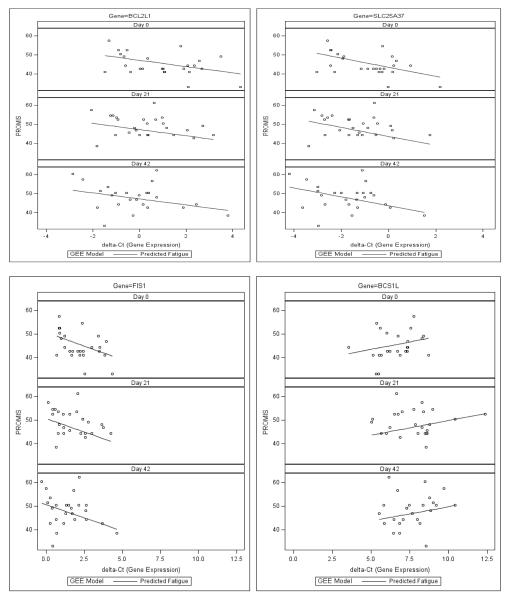Figure 2.
Correlations between expression of mitochondrial-related genes (BCL2L1, SLC25A37, FIS1, and BCS1L) and PROMIS-F T-scores
The generalized estimating equation model shows significant correlations between expressions of BCL2L1 (β = −1.61, p = .006), SLC25A37 (β = −2.31, p < .001), FIS1 (β = −2.03, p = .01), BCS1L (β = 1.34, p = .007) and Patient Reported Outcomes Measurement Information System-fatigue (PROMIS-F) T scores at baseline (day0), midpoint (day21), and endpoint (day42) of external beam radiation therapy (EBRT). X-axis indicates the value of delta-Ct number and the more delta Ct number the less expression of the gene (downregulation). Y-axis indicates fatigue score and the higher the score the more fatigue symptom. Graphics of BCL2L1, SLC25A37 and FIS1 present a negative correlation between delta-cycle number of gene expression and PROMIS-F score, which mean the higher fatigue symptom the less delta Ct number of gene expression (indicating overexpression of the gene). While the delta Ct number of BCS1L is positively associated with fatigue score, indicating the higher fatigue score the more delta Ct number and down-regulation of BCS1L. These findings suggest that higher expressions of BCL2L1, SLC25A37, FIS1 and down-regulation of BCS1L are associated with worsening fatigue symptoms during EBRT.

